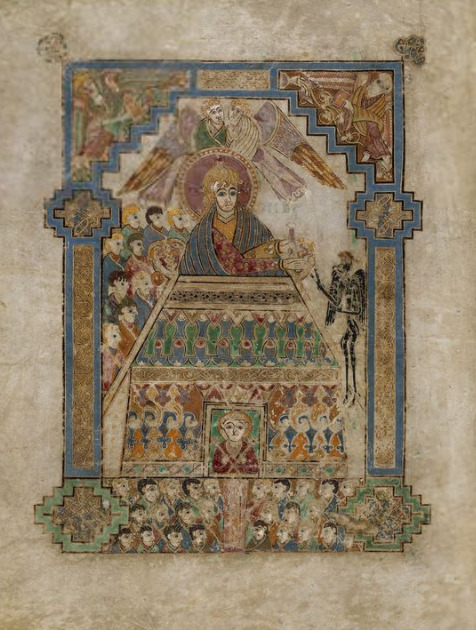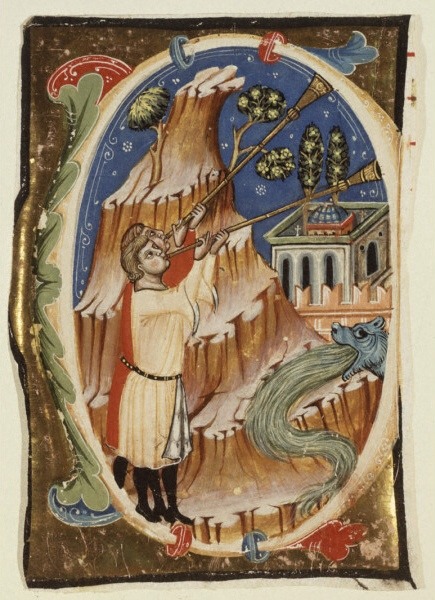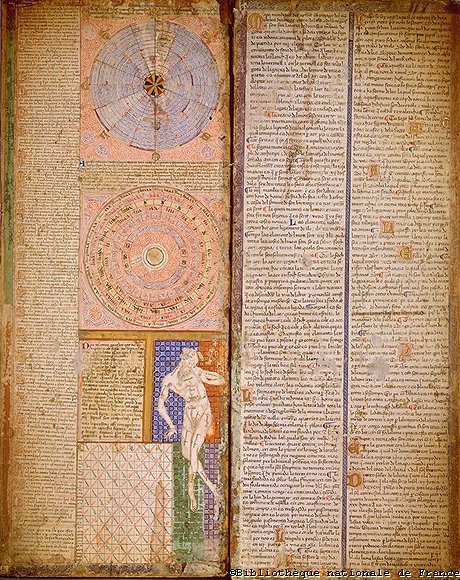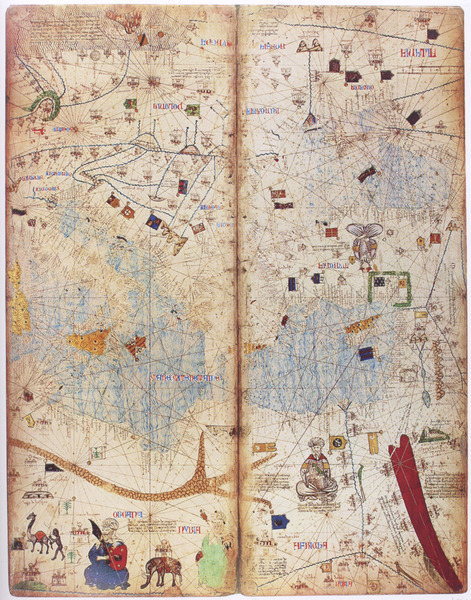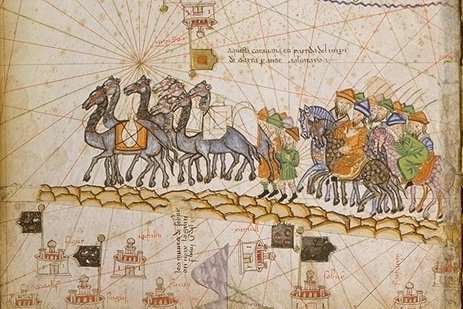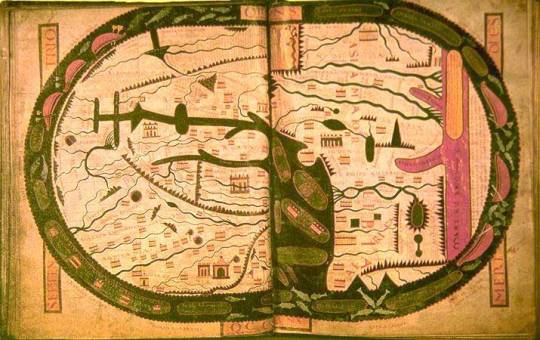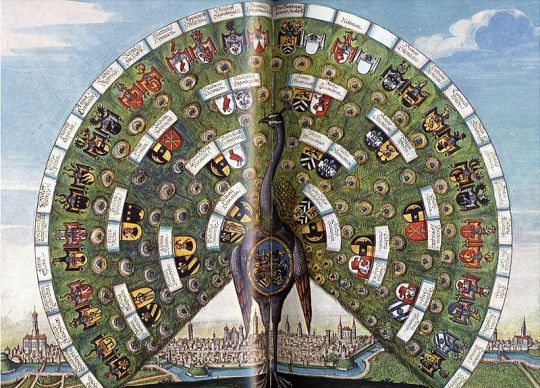Photo
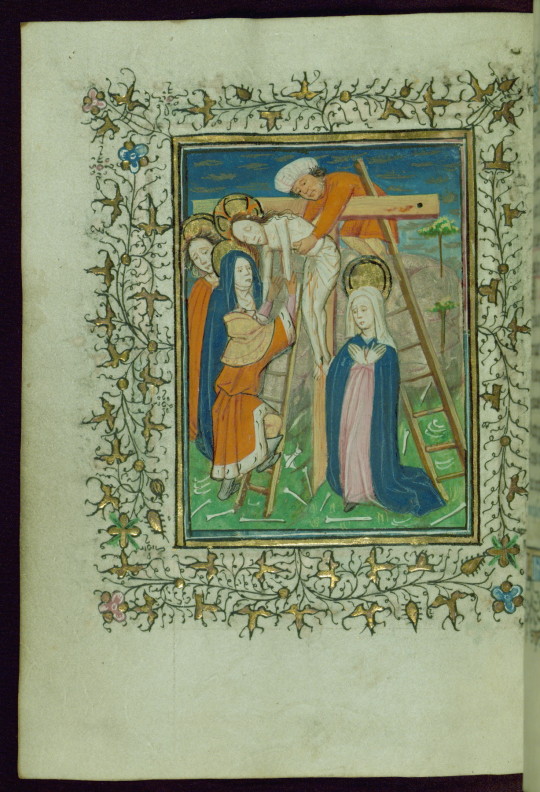
Book of Hours (Cistercian), Deposition, Walters Manuscript W.218, fol. 25v by Walters Art Museum Illuminated Manuscripts http://flic.kr/p/DQa7T8
28 notes
·
View notes
Photo
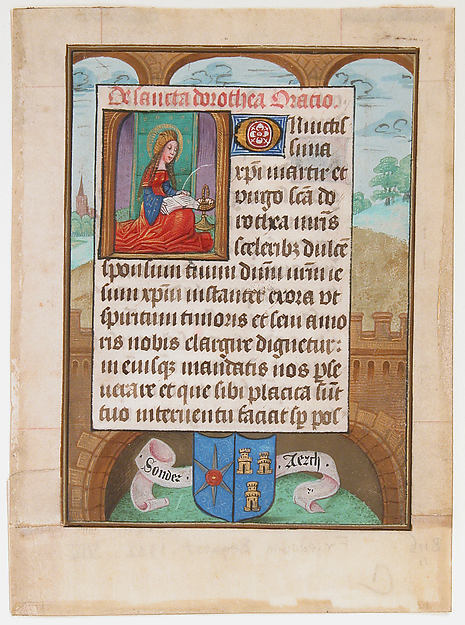
Manuscript leaf with Saint Dorothy (circa 1500) from a Book of Hours.
Tempera, ink, and shell gold on parchment. Made in Ghent-Bruges, Netherlands.
Image and text courtesy The Met.
51 notes
·
View notes
Photo

On my continuing trip through the St Gall archives, I come next to MS 14.
The manuscript contains five books from the Old Testament (Job, Tobit, Judith and 1 and 2 Ezra). It contains notations in the hand of Notker the Stammerer, the biographer of Charlemagne. It dates to the 2nd half of the 9th century.
As an illuminated manuscript, it's about as minor as it gets; it makes the list because of exactly an interesting initial on page 1, and it's a pretty minor initial at that.
It's a zoomorphic initial, a fish shaped into a letter "C" with vegetal ends. "Fish letters" were a pretty common Merovingian motif, and lasted well into the Carolingian period. This is a pretty typical example. The titles are hollow capitals, filled with green and red. There are a few other hollow capital initials, filled with red through the manuscript, and that's about it for this manuscript. Perhaps useful, in a minor way as a model.
#9th century#illuminated manuscript#illuminated mauscripts#initials#zoomorphic initials#st gallen#Carolingian Art
14 notes
·
View notes
Photo
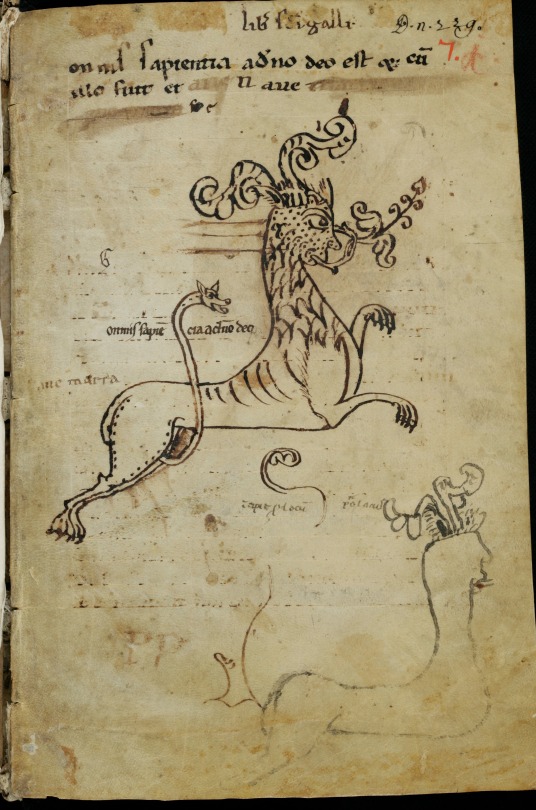
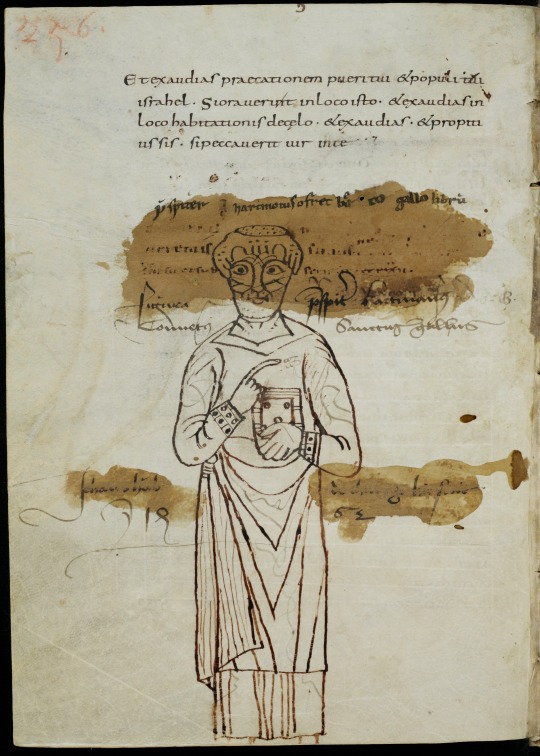
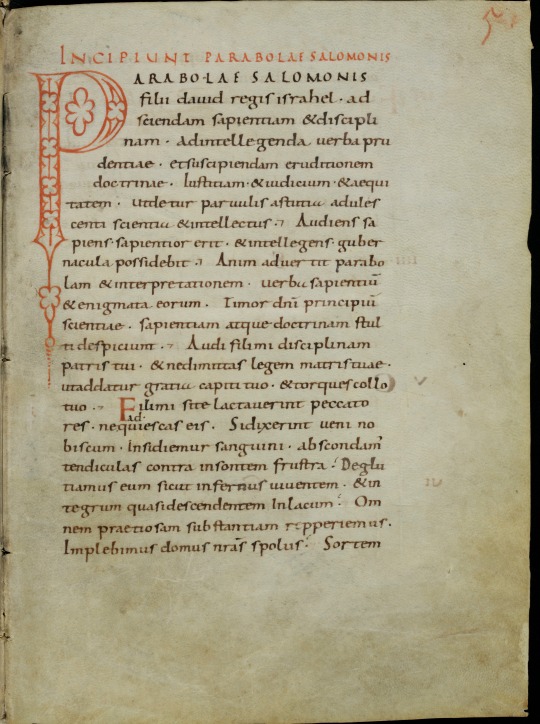
This is something new. I've had this back burner project for a year of so I call 10,000 manuscripts. Basically it was an attempt to gather together a record of all of the "important" illuminated manuscripts. The number 10,000 is probably too small, especially as my sense of what is "significant" has expanded since I conceived the project. I'm now, in addition to the "important" manuscripts, also interested in finding models for my own (at this point theoretical) attempts at illumination, which often means much less well know manuscripts. Now the project should probably be something more like "100,000 manuscripts", but I'm not going to live that long. I'm especially not going to live long enough as long as it is a back burner project, so I need to movie it up. Although I can't devote my life to it, I am going to move it up to a middle burner, at least.
As part of the project I've been browsing through the thousands of manuscripts various libraries around the world have made online facsimiles of, looking for interesting manuscripts. Right now I'm looking at the library at the monastery of St Gall. They have 580 full manuscripts online, and the number is ever growing. They started in 2005 and have been adding ever since. Their latest batch was put up last month.
So let's look at some of the things I've found:
First up is the Small Hartmut Bible (Cod. Sang. 7). Hartmut was the vice-abbot of St Gall in the middle of the 9th century. I'm assuming that there's a "Big Hartmut Bible" out there as well. The Small Hartmut Bible contains the books of Proverbs, Ecclesiastes, Song of Solomon, Wisdom, and Ecclesiasticus.
The text is in a variant of Carolingian minuscule, and is written in a single column of 25 lines. Titles are in uncials, and the capitals are in red. There is not enough original decoration to warrant notice, but there are two later additions that I find interesting.
The first is a beast, added probably in the 9th or tenth century. Obviously someone doodling, or testing a new pen. The beast is described as a "Rising lion with vegetal ram horns, lion's paws, and tail between his legs, with the end of dog head. From the mouth a branch grows. The inscription is "omnis sapientia a dno. Deo est et cum illo fuit et ii ave" I like this beast and can seeing using it as a model sometime in my own illumination.
The second addition is a portrait of Hartmut, who sponsored the book, added later, perhaps in the 12th Century. I like this because I can use it as a model for initial line drawing of a human figure.
As a bonus the book has one very nice initial. By itself, it would not have been enough for me to include it, as there is no way I can include every manuscript with a pen work initial, but I'm glad to have it as a model nonetheless
57 notes
·
View notes
Photo
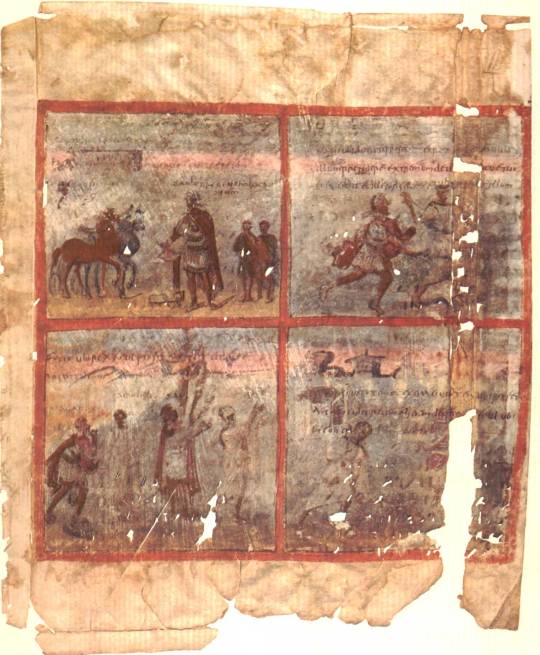
The Quedlinburg Itala fragment (Berlin, Staatsbibliothek Preussischer Kulturbesitz, Cod. theol. lat. fol. 485) is a fragment of six folios from a large 5th century illuminated manuscript of an Old Latin translation of the Bible, probably produced in Rome in the 420s or 430s. It is the oldest surviving illustrated biblical manuscript and has been in the Berlin State Library since 1875-76. The pages are approximately 305 x 205 mm large. The surviving fragments cover parts of the Books of Kings and Books of Samuel. The fragments were found from 1865 onwards (two in 1865, two in 1867, one in 1887) re-used in the bindings of different books that had been bound in 1618 in the town of Quedlinburg, home of Quedlinburg Abbey, a large Imperial monastery, where the manuscript may well have spent much of its life. The illustrations are grouped in framed miniatures occupying an entire page, with between two and five miniatures per page, with the corresponding text being on the other side of the pages; there are fourteen miniatures in total. One folio contains only text. The illustrations, although much damaged, are done in the illusionistic style of late antiquity.
24 notes
·
View notes
Photo
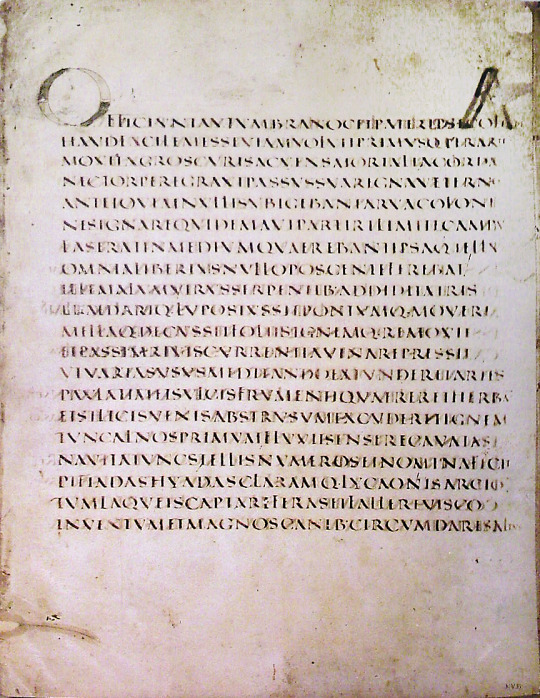
The Vergilius Augusteus is a manuscript from late antiquity, containing the works of the Roman author Virgil, written probably around the 4th century. The Augusteus is not illuminated but has decorated initial letters at the top of each page. These letters do not mark divisions of the text, but rather are used at the beginning of whatever line happened to fall at the top of the page. These decorated initials are the earliest surviving such initials. Only seven leaves of the manuscript survives, four of which are in the Vatican Library (MS 3256), and the remaining three in the Staatsbibliothek zu Berlin (Lat. fol. 416). The leaves contain fragments of Virgil's Georgics and the Aeneid. The fragments are written in Roman square capitals, which shows that square capitals were used in handwriting and not only for stone inscriptions. Due to its great age, it was originally believed that the manuscript was written in the time of Roman emperor Caesar Augustus, hence its name. In the later Middle Ages the manuscript was kept in the abbey of St. Denis in Paris.
101 notes
·
View notes
Photo
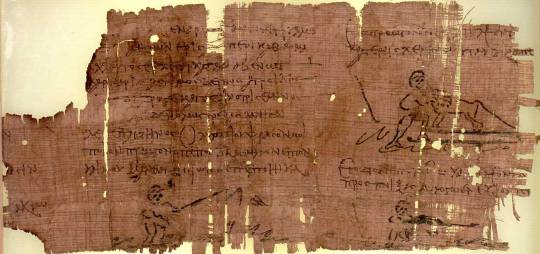
The Heracles Papyrus (Oxford, Sackler Library, Oxyrhynchus Pap. 2331) is a fragment of 3rd century Greek manuscript of a poem about the Labors of Heracles. It contains three unframed colored line drawings of the first of the Labors, the killing of the Nemean Lion, set within the columns of cursive text. It was found at Oxyrhynchus (Pap. 2331) and is one of the few surviving scraps of classical literary illustration on papyrus. The fragment is 235 by 106 mm.
7 notes
·
View notes
Photo
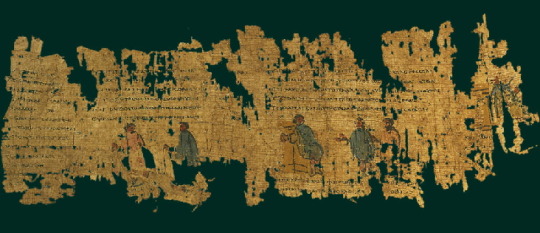
The Romance Papyrus (Paris, Bibliothèque Nationale, cod. suppl. gr. 1294) is a fragment of 2nd century Greek manuscript of an unknown romance. It contains two unframed illustrations set within the columns of text. It is one of the oldest of the few surviving scraps of classical literary illustration on papyrus. The fragment is 340 by 115 mm. It was acquired by the Bibliothèque Nationale in 1900.
8 notes
·
View notes
Photo
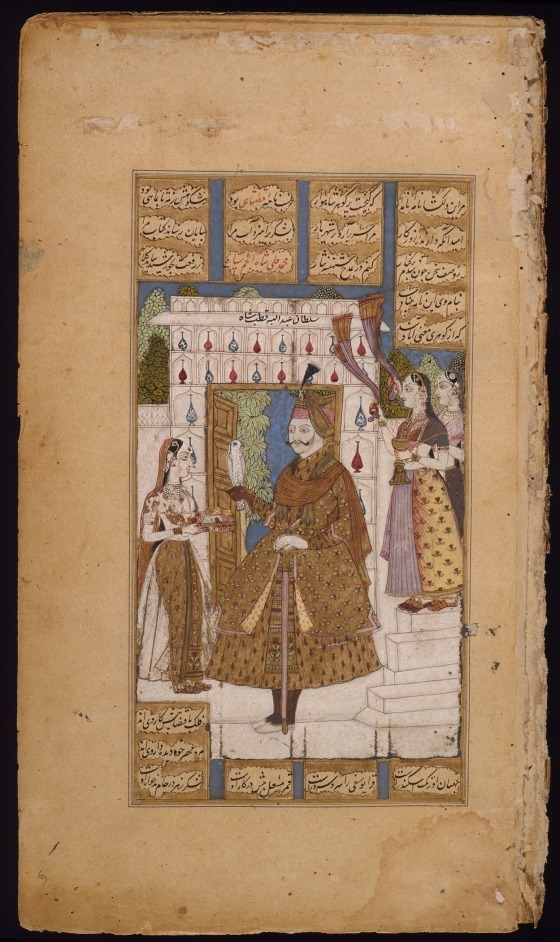
Illuminated Manuscript of the History of the Qutb Shahi Sultans of Golconda, India, Andhra Pradesh, Hyderabad, 1610-1611
75 notes
·
View notes
Photo
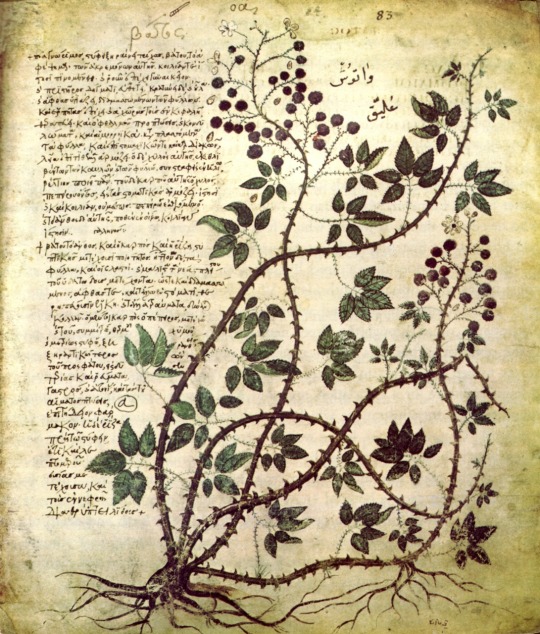
hearthside-reader: Part of a bramble, from the manuscript oftenest known as the ‘Vienna Dioscorides’ This ‘is an illuminated Byzantine manuscript produced about AD 512 for Anicia Juliana
spamula.net
239 notes
·
View notes
Photo
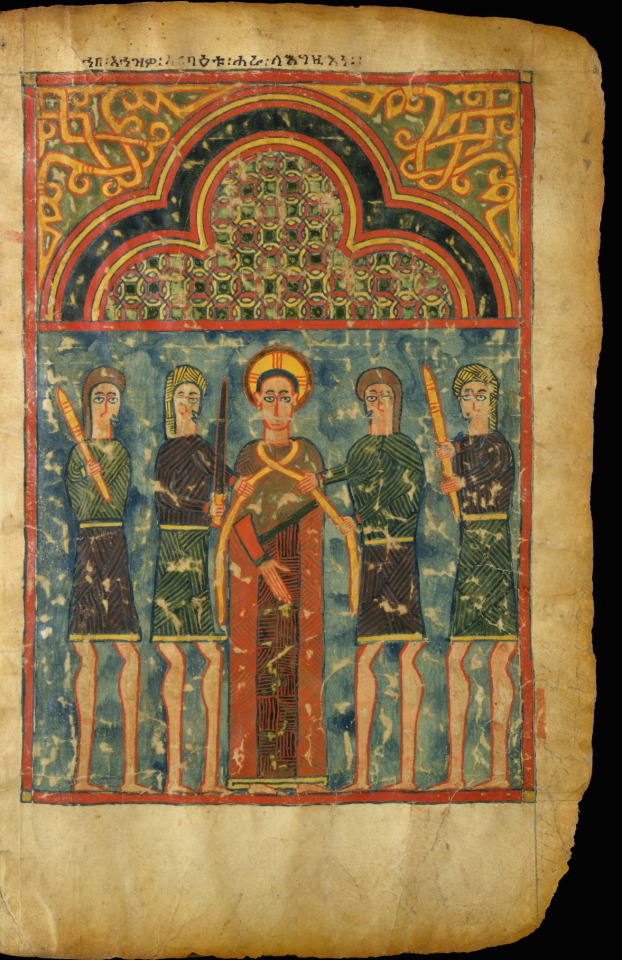

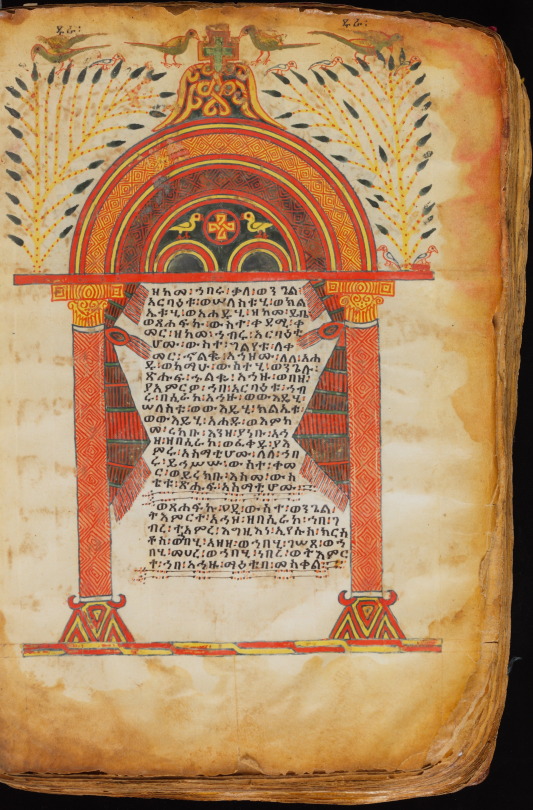

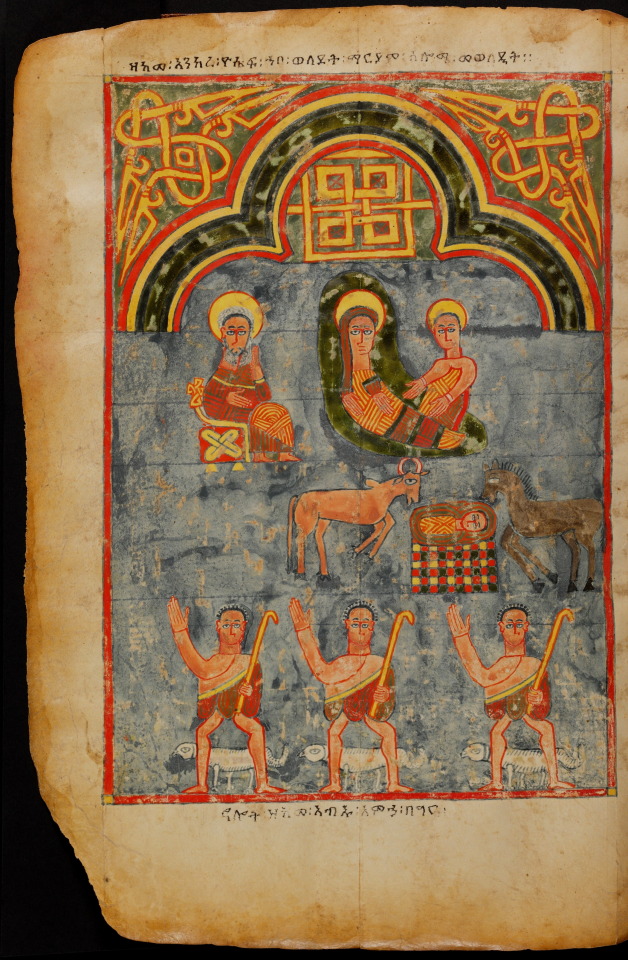
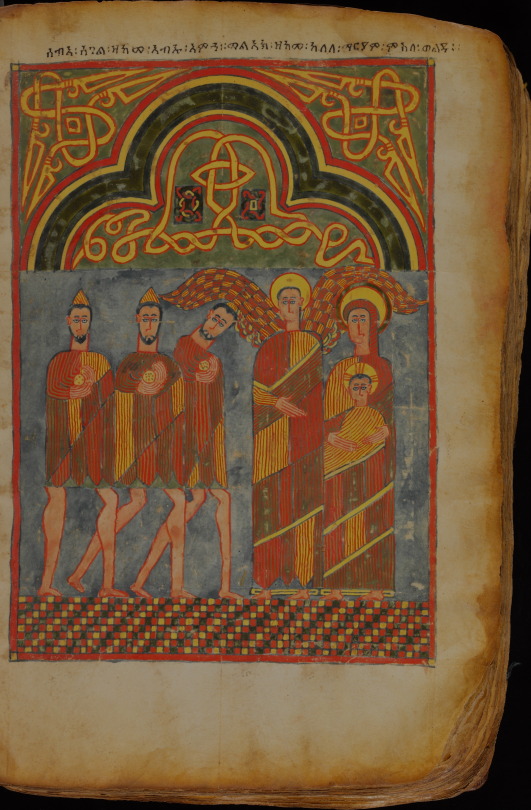
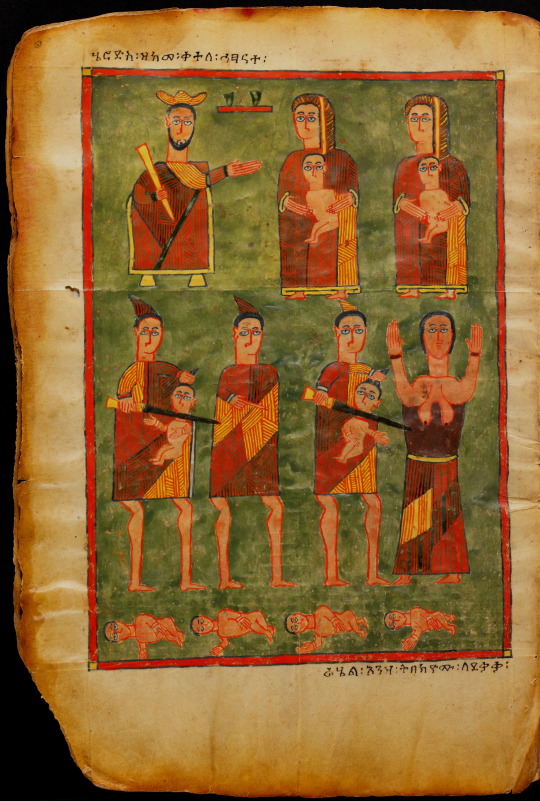
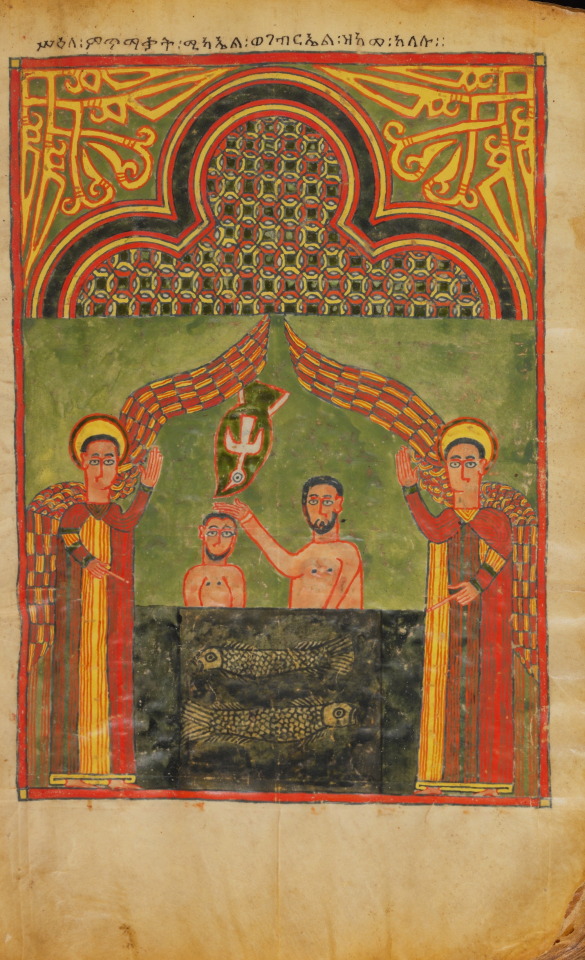
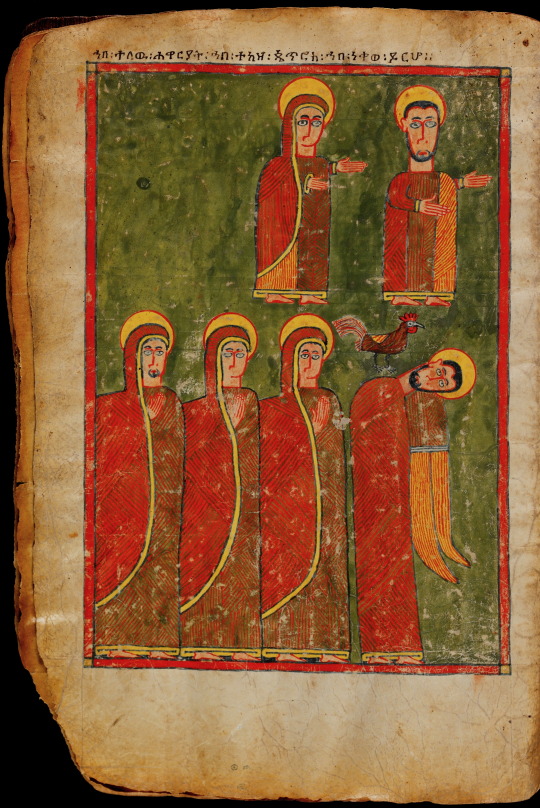
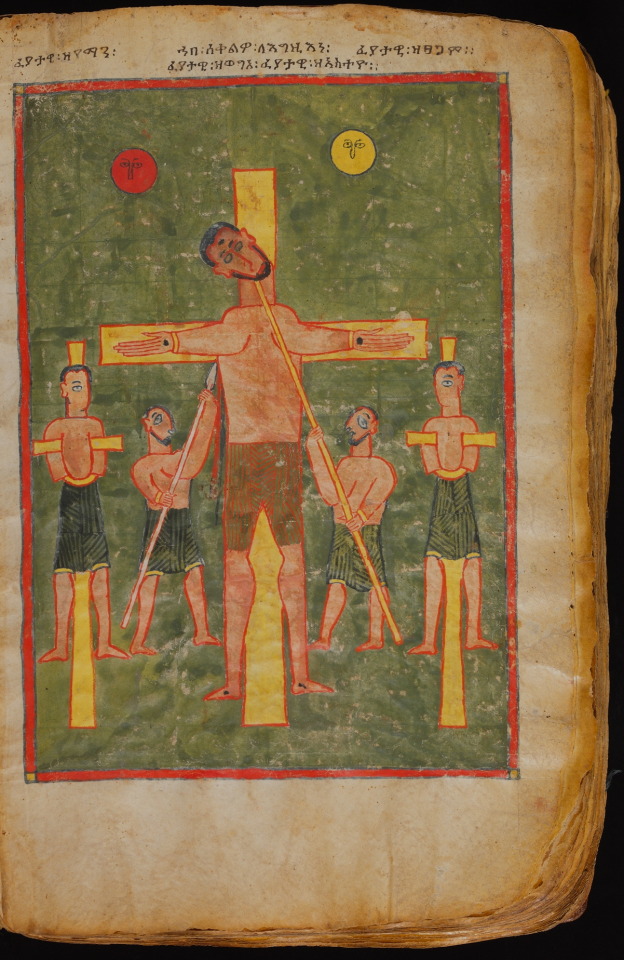
Pages from an Illuminated Gospel. Ethiopia, Highland Region. 1300s.
This illuminated manuscript of the Four Gospels was created in the late fourteenth to early fifteenth century at an Ethiopian monastic center. Its full-page paintings on vellum depict New Testament scenes from the life of Christ and portraits of the evangelists. The text is in Ge’ez, the classical Ethiopian language. Typical of Ethiopian painting, the imagery is two-dimensional and linear. Heads are seen frontally; bodies are often in profile. The artist abbreviated the facial features and treated the human form as a columnar mass, articulated in bold black and red lines.
In the fourth century A.D., the Ethiopian king Ezana converted to Christianity. Christianity became the official religion of the state whose legacy endured in various forms until the twentieth century. Around the time this manuscript was made, Ethiopia’s Christian kingdom expanded its influence. Monastic centers became increasingly important outposts of state power. They were also the chief sites of Christian art production. During the sixteenth century, Islamic incursions devastated the region, and most Christian Ethiopian art that predates the seventeenth century was destroyed. This illuminated gospel is a rare survival. -Met
655 notes
·
View notes
Photo
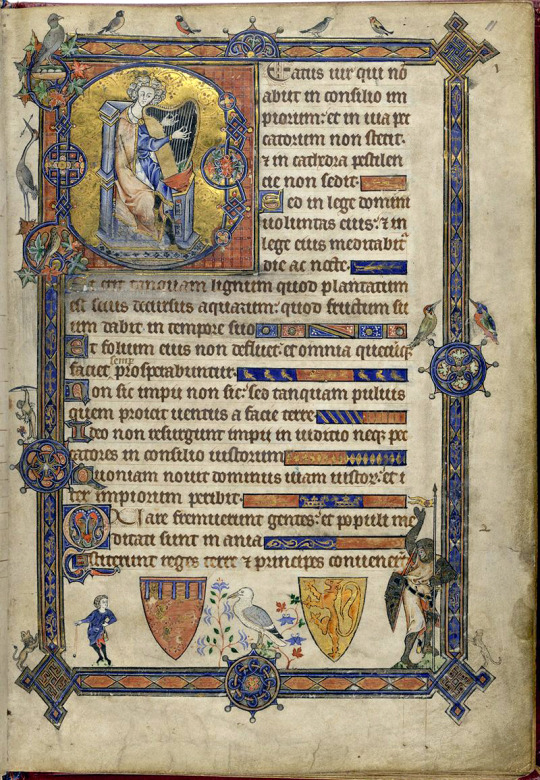
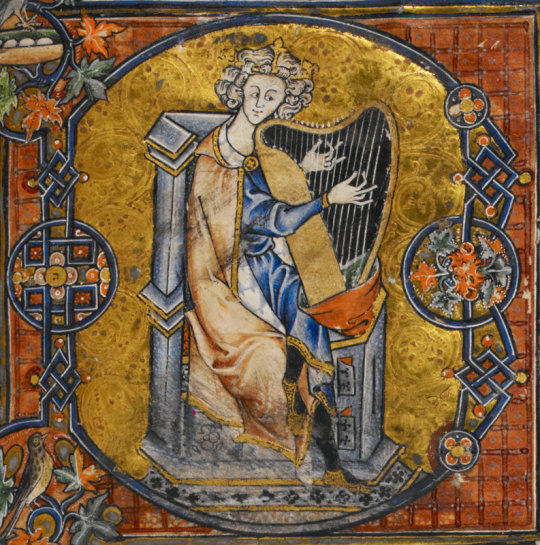
King David playing the harp; from the Alphonso Psalter. Unknown Miniaturist, English (active in 1280s)
711 notes
·
View notes
Photo
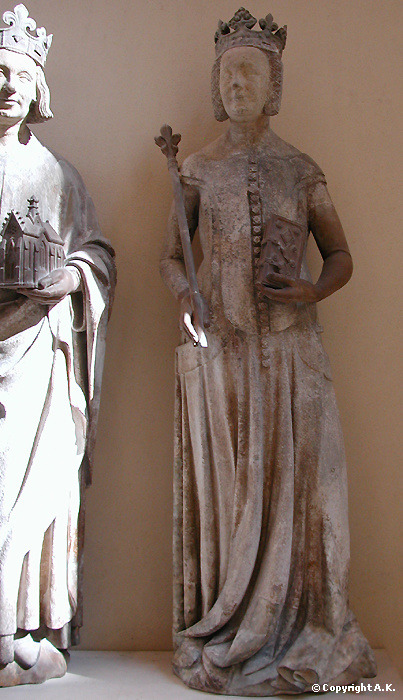
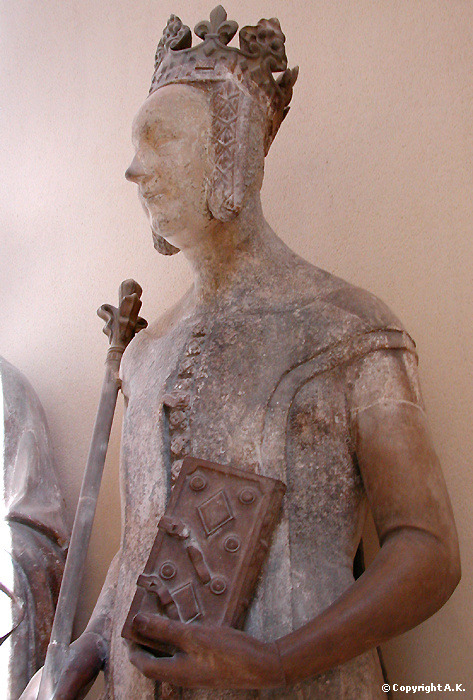
Statue of Jeanne de Bourbon, Queen of France, c. 1365-1380
100 notes
·
View notes
Photo
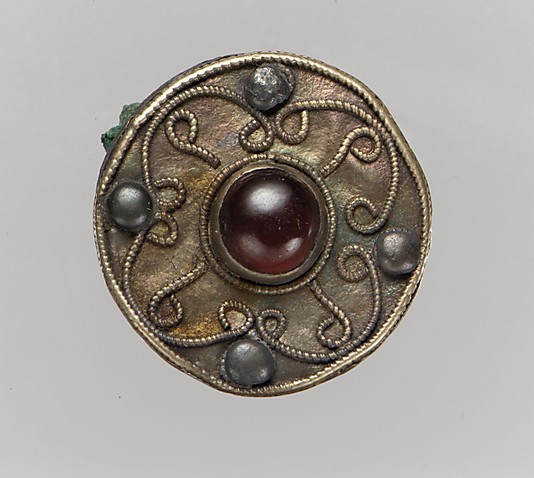
Disc Brooch
7th Century AD
Frankish
(Source: The Metropolitan Museum)
536 notes
·
View notes
